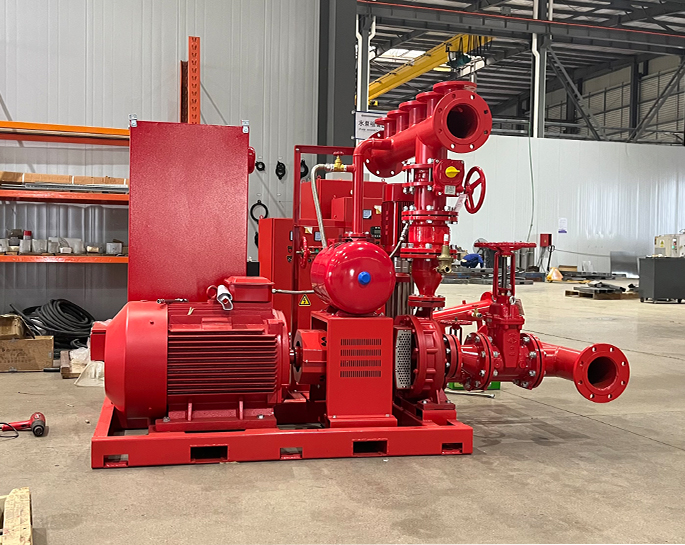A fire pump serves a critical role in a fire protection system by ensuring a reliable and sufficient water supply for firefighting. Its primary purpose is to provide water at a high pressure and flow rate to the sprinkler system, standpipes, hydrants, or other firefighting equipment within a building or facility. The key functions and purposes of a fire pump include:
1. **Maintaining Adequate Water Pressure:**
- Fire pumps are used to boost water pressure in a fire protection system. This is essential to ensure that water reaches all areas of a building, especially in tall structures where natural water pressure may be insufficient.
2. **Compensating for Insufficient Water Supply:**
- In some cases, the available water supply from the municipal water source or an on-site water storage tank may be inadequate to meet the demands of a fire incident. Fire pumps compensate for this by boosting the water supply to the required pressure levels.
3. **Supporting Sprinkler Systems:**
- Fire pumps are often a crucial component of automatic sprinkler systems. They help maintain the necessary water pressure to activate and operate sprinkler heads, controlling or suppressing fires in their early stages.
4. **Supplying Standpipes:**
- Standpipe systems are vertical pipes installed in buildings, equipped with hose connections on each floor. Fire pumps ensure an adequate flow of water to these standpipes, allowing firefighters to access water at various points within a structure.
5. **Assisting Hose Reels and Hydrants:**
- Fire pumps provide the pressure needed to operate hose reels and hydrants strategically placed throughout a building or on the premises. These outlets are crucial for manual firefighting efforts.
6. **Ensuring Reliable Fire Protection:**
- The purpose of a fire pump is to enhance the overall reliability and effectiveness of a fire protection system. By maintaining water pressure and flow rates, the pump helps ensure that the firefighting equipment operates as intended during an emergency.
7. **Meeting Regulatory Requirements:**
- Many building codes and fire safety regulations require the installation of fire pumps in specific types of structures to meet safety standards and ensure adequate fire protection measures.
It's important to note that fire pumps come in various types, including electric motor-driven pumps, diesel engine-driven pumps, and even more modern and specialized systems. The selection of the appropriate fire pump depends on factors such as the building's size, occupancy, water supply, and local regulations. Proper maintenance and regular testing of fire pumps are also critical to their reliable operation during an emergency.



